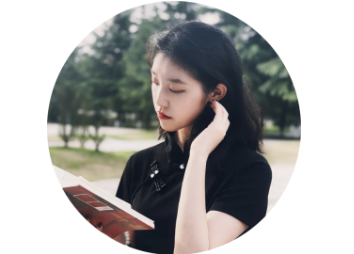
The Origin of Qipao 旗袍的由来
作者 /李舒鸣
指导教师 / 班海东 宁静 牛德元
Qipao, a traditional dress for females in China, is reputed as one of the paragons of traditional Chinese costumes and an irreplaceable cultural heritage in the fashion world.
旗袍是中国女性的传统服饰,被誉为中国传统服装文化的典范,是中国时尚界无法取代的文化遗产。
Though debated by experts about the exact time of its occurrence, it is generally believed that Qipao originated from a type of Manchurian female garment in the Qing Dynasty (1636-1912).
虽然对旗袍的产生时间有年议,现在通常认为旗袍改良于清代(公元1636年—公元1912 年)满族妇女的旗服。
It evolved and was quickly popularized during the Republican Period.
真正流行是在 20世纪民国时期,
Under the influence of fashionable high-class courtesans, celebrities in Shanghai and even politicians of the time, it reached its heyday in the 1930s and 1940s.
盛行于三四十年代,在上海的社交名媛乃至政要名流的引领下风靡中国各地。
Qipao has gone through constant changes.
旗袍的款式几经变化。
The original Qipao was loose-fitting and puritanical enough to conceal the figures of the women’s body.
初兴的旗袍剪裁宽松,强调遮体功能,大有清教徒之风。
Modern Qipao is tight-fitting, accentuating the female shape.
现代旗袍紧身合体,突出东方女性的形体之美。
Qipao mainly features a stand-up collar, Chinese knotted buttons, the left lapel over the right, a tight-fitting waist, and hemmed slits on both sides.
旗袍的主要特征包括立领盘扣、右社大襟、侧摆开衩、滚边收腰。
It is usually made from satin, brocade, silk, or cotton. Some are embroidered with exquisite patterns.
面料多采用缎子、织锦、丝绸或纯棉,或有精美刺绣。
Two major styles of modern Qipao were established in the progression, namely the Shanghai style and the Beijing style.
现代旗袍逐渐发展成两大派别:海派旗袍和京派旗袍。
The former, absorbing western elements of design and tailoring, leads the fashion trend.
海派旗袍受西方设计和剪裁的影响,引领了现代旗袍风尚。
It is generally accepted by scholars that the craze for Qipao in the Republican Period is a natural result of the rise of feminism and women’s pursuit of intellectual freedom.
关于民国旗袍风行的原因,有众多学者将其归为民国初期女子为寻求思想的独立和女权的解放。
Women’s wear in former Dynasties was a two-piece garment and one-piece garment was exclusively worn by men. Wearing Qipao, which is basically a one-piece robe, carries a symbolic sense of promoting gender equality.
穿旗袍打破了旧式妇女的“两截穿衣”、男人穿一件长袍的传统,体现出男女平等意识。
Later on, the priority of Qipao shifted from a political expression to aesthetic and ornamental emphasis.
后来,旗袍的美学和装饰意义超过其政治上的诉求。
It was chosen as the Republic of China’s mandarin gown in 1929.
旗袍曾于1929年被定为民国国服。
Since the reform and opening-up policy was adopted in China, Qipao has been designated as the formal attire for female diplomats in foreign affairs activities and international conferences.
改革开放以后,旗袍成为外事场合礼仪服装,和国际盛会礼服。
It usually enjoys priority of the uniform in service industry and a dress for brides to change into for the tea ceremony at their weddings.
旗袍也是很多服务型行业制服的首选,更是婚礼上新娘敬茶时的必备礼服。

李舒鸣
英语B2003班
热爱阅读,音乐,舞蹈。曾获桃李杯芭蕾舞组奖项,2022年全国大学生英语翻译大赛省级一等奖;2023年‘BETT杯’全国大学生英语阅读大赛二等奖,2022年全国大学生普通话挑战赛二等奖;西京学院两感信校赛三等奖;行健书院脱口秀大赛第一名等奖项。
“文字和声音是对语言最好的传颂,也是最浪漫的艺术。我愿意为此,竭尽所能。也希望在热爱的领域做到极致,闪闪发光;轻描淡写地说,浓墨重彩地做。
